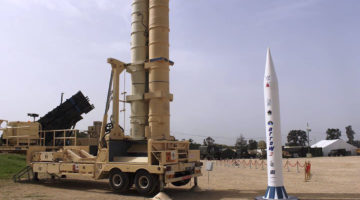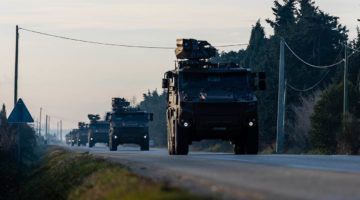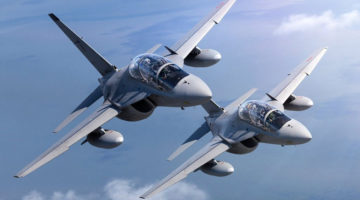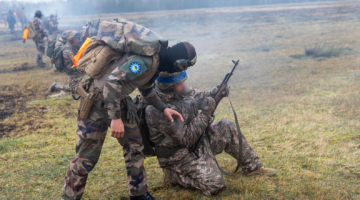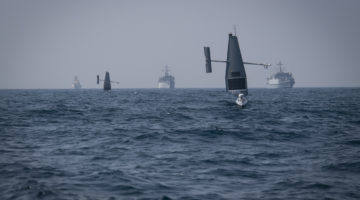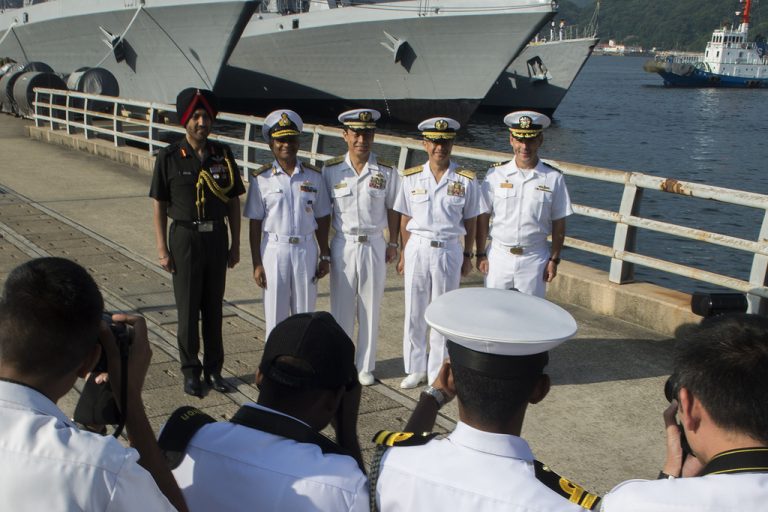(www.SLDinfo.com – By Robbin Laird) Exercise malabar 2016: us, Indian and Japanese Navies collaborate on maritime security
2016-06-19 The process of enhanced cooperation among the US, Japanese and Indian navies is proceeding apace.
The Chinese have already driven a deeper defense relationship between the two most important Pacific naval powers in the 20th century and now are putting the Indians in play as well.
Enhanced cooperation provides ways to shape joint operations and joint procurement as well.
The P-8 is a case in point
The Malabar 2016 exercise currently underway is doing just that, enhancing the joint interoperability capabilities of the three forces.
In a visit to Jax Navy, a USN Officer involved earlier in working with Indian P-8s described the experience this way:
The P-8I is different from the P-8A with a different sensor suite, one which provides more emphasis on coastal defense as well.
“We operated from their P-8I base at INS Rajali.
We found them to be very professional and we operated together from that base.
They are building the infrastructure there to support their P-8Is.
They see P-8I as critical to how they’re going to operate in the future.
They had a lot of questions about how we operated.
We had questions about how they operated.
And at the time they were the only other country operating P-8.”
According to an article by MC2 Ryan Batchelder from the Stennis Strike Group Public Affairs:
SASEBO, Japan – Ships from the Indian Navy, Japan Maritime Self-Defense Force (JMSDF) and U.S. Navy departed U.S. Fleet Activities Sasebo to conduct the at-sea phase of exercise Malabar 2016, June 14.
A trilateral maritime exercise, Malabar is designed to enhance dynamic cooperation between Indian Navy, JMSDF and U.S. Navy in the Indo-Asia-Pacific.
The exercise allows for practical training, while exchanging skills and cultures, and helps to increase the understanding of multinational operations.
“At its core, originally, Exercise Malabar was started [in 1992] as a bilateral exercise between the Indian Navy and the U.S.,” said Capt. Jason Gilbert, U.S. Naval attaché to India. “The Japanese (JMSDF) became a permanent partner in 2015, and we are now starting to see the benefits of Malabar being a trilateral exercise.”
Ships will spend the at-sea phase of Malabar in the Philippine Sea to advance the participating nations’ military-to-military coordination and capacity to plan and execute tactical operations in a multinational environment.
“It’s great to see the details and planning from the harbor phase [of Malabar] come to fruition at sea,” said Lt. Cmdr. Brent Jackson, executive officer of the guided-missile cruiser USS Mobile Bay (CG 53) that is participating in Malabar. It’s amazing to see thousands of tons of steel come together on the water and operate as seamlessly as we had planned.”
Malabar 2016 builds on progress made during previous exercises, improving participating nations’ abilities to conduct joint operations, and improve trilateral coordination and capacity.
“We have a variety of exercises planned for the at-sea phase of Malabar,” said Gilbert. “We are doing the full spectrum of things that you can possibly do at sea in a short period of time. The more we can understand how each nation works together translates into easier facilitation of operations in the future.”
Areas of proficiency that will be exercised include surface events; visit, board, search, and seizure (VBSS) exercises; subject matter and professional exchanges; maritime patrol and reconnaissance scenarios; and anti-submarine warfare operations.
“Mobile Bay is out here to be a strong partner in supporting our allies in the exercises’ upcoming operations,” said Jackson. “Both during the harbor phase, and now at sea, we are part of a much larger team and we look forward to executing our mission together as professionals.”
Jackson added that three nations coming together to conduct complex, multi-national operations and maintaining presence helps to preserve peace and stability in the region and further enhances maritime partnerships between allied nations.
“Interoperability is crucial, because if we ever have to work together in a real-world scenario, we will have had the necessary training and preparation to the point where our operations become second nature,” said Gilbert. “Working together is what Malabar is all about.”
And this article published by the Indian Navy provides further details as well.
In consonance with India’s ‘Act East Policy’ and growing relations among India, US and Japan, IN ships Satpura, Sahyadri, Shakti and Kirch are participating in the 20th edition of Ex MALABAR-16 with the USN and Japanese Maritime Self Defense Force (JMSDF).
IN and USN have regularly conducted the annual bilateral exercise named ‘MALABAR’ since 1992. Since 2007, MALABAR has been held alternatively off India and in the Western Pacific.
The 19th edition of the exercise, Ex MALABAR-15, was conducted off Chennai and included participation by the JMSDF.
The 20th edition of the exercise, Ex MALABAR-16, is being conducted from 14 to 17 June 16 with the harbour phase at Sasebo from 10 to 13 June 16 and the sea phase in the Pacific Ocean from 14 to 17 June 16.
The primary aim of this exercise is to increase interoperability amongst the three navies and develop common understanding of procedures for Maritime Security Operations.
The scope of MALABAR-16 includes professional interactions in harbour and a diverse range of activities at sea, including complex surface, sub-surface and air operations.
The IN ships participating in the exercise are from the Eastern Fleet and include INS Sahyadri and INS Satpura, indigenously built guided missile stealth frigates, INS Shakti, a modern fleet tanker and support ship and INS Kirch, an indigenous guided missile corvette. The ships have embarked one Sea King 42B ASW helicopter and two Chetak utility helicopters.
The US Navy will be represented by ships from CTF 70 of the USN 7th fleet, which is based at Yokosuka, Japan. The CTF will include the aircraft carrier USS John C Stennis (CVN 74), Ticonderoga class Cruiser USS Mobile Bay and Arleigh Burke class destroyers USS Stockdale and USS Chung Hoon, all with embarked helicopters. In addition, one nuclear powered submarine, carrier wing aircraft and Long Range Maritime Patrol aircraft will also participate in the exercise.
The JMSDF will be represented by JS Hyuga, a helicopter carrier with SH 60 K integral helicopters and Long Range Maritime Patrol aircraft, besides other advanced warships for specific parts of the exercise.
Additionally, the Special Forces (SF) of the three navies will also interact during the exercise.
MALABAR–16 will be another significant step in strengthening mutual confidence and inter-operability as well as sharing of best practices between the Indian, Japanese and US Navies.
The exercise will support maritime security in the Indo-Pacific region, and benefit the global maritime community.
The video above shows the John C. Stennis Strike Group, the Indian Navy, and the Japanese Maritime Self-Defense Force taking part in exercise Malabar 2016.
Read more >> http://www.sldinfo.com/exercise-malabar-2016-us-indian-and-japanese-navies-collaborate-on-maritime-security/
Credit: US NAVY, 6/17/16
Photo : SASEBO, Japan (June 14, 2016) Senior naval commanders from the Indian Navy, Japan Maritime Self Defense Force (JMSDF) and U.S. Navy pose for a photo before getting underway for exercise Malabar 2016’s at-sea phase. A trilateral maritime exercise, Malabar is designed to enhance dynamic cooperation between the Indian Navy, JMSDF and U.S. Navy Forces in the Indo-Asia-Pacific. (U.S. Navy photo by Ensign Davis Anderson/RELEASED)
Malbar 2016 from SldInfo.com on Vimeo.

